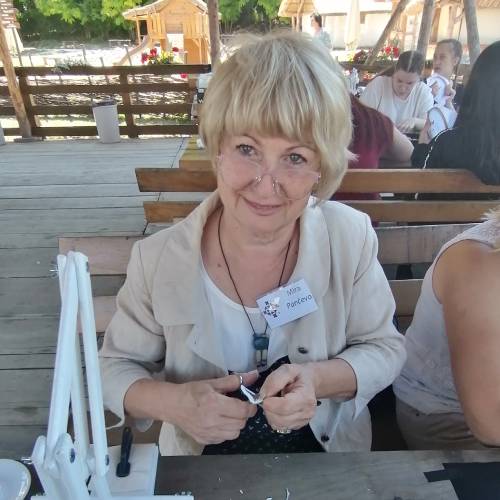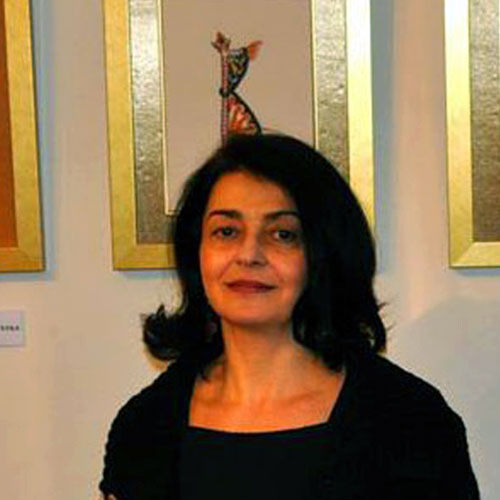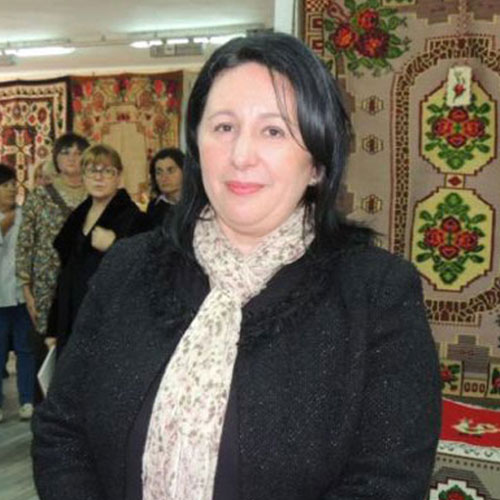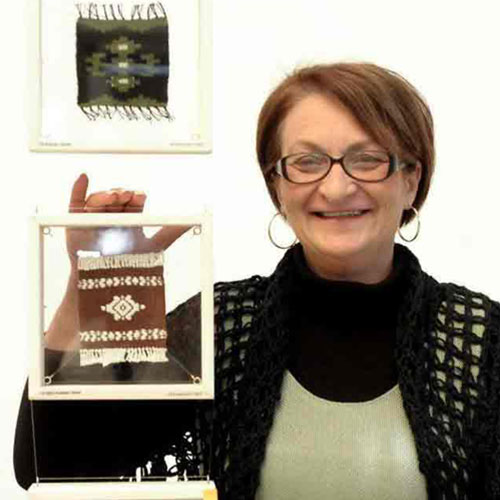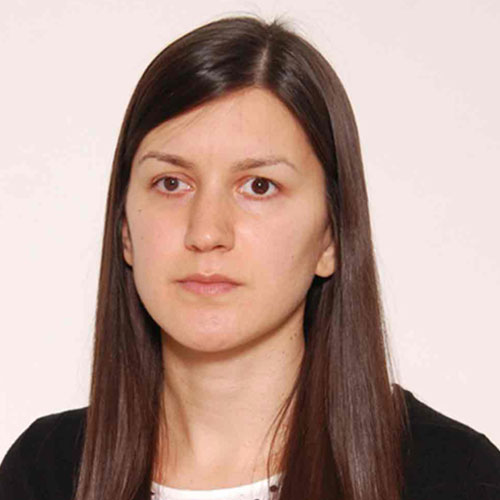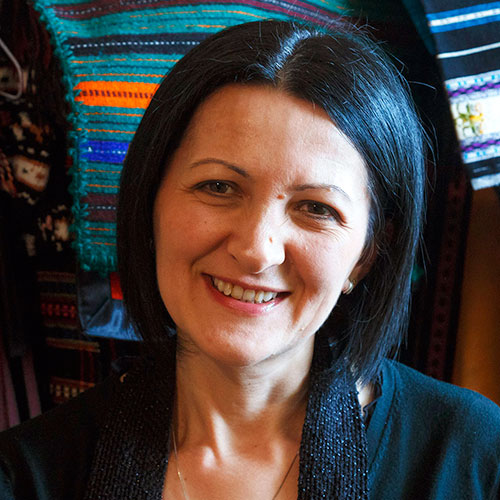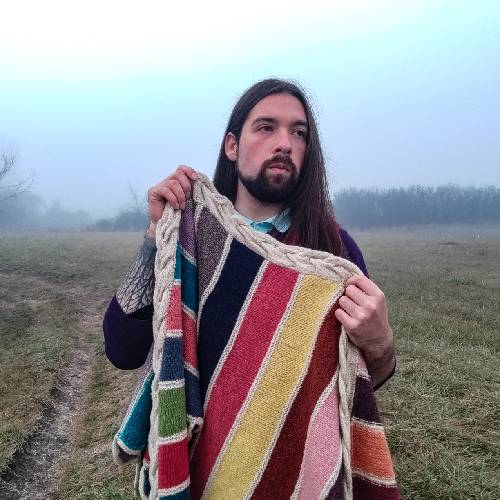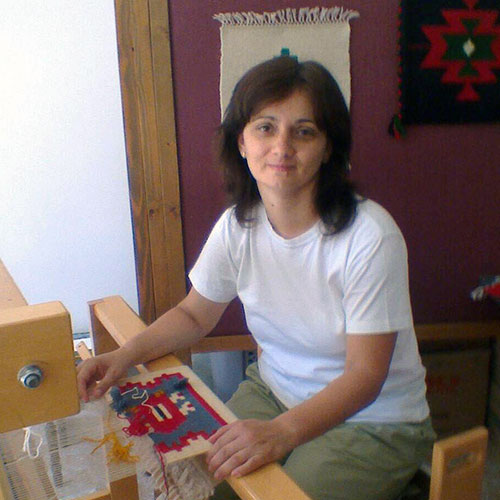Techniques
Below are short stories about origins and development of old crafts that Ethno Network strives to preserve as a vital element of Serbia's cultural heritage. Ethno Network nurtures traditional techniques primarily through engaging educators who selflessly pass their knowledge to Ethno Network trainees, interested public and young people. The most prominent among them are presented as active guardians of tradition having a recognized role in the communities they come from.
EMBROIDERY AND GOLD-THREAD EMBROIDERY
Folk embroidery is one of the oldest and most popular traditional techniques as a way of decorating linen by drawing thread or metal threads with a needle. Embroidery motifs are a very important decoration on clothing and textiles in the traditional Serbian culture. In the villages, women were mainly involved in embroidery, and girls were taught embroidery from an early age to prepare their maiden dress for the wedding ceremony, and this is where the creativity of young embroiders was particularly abundant. The letters of alphabet were once used as the "embroidery initials" (the beginners’ piece of a young embroider) and a model for spreading literacy and educating the population.
Goldwork is a decorative embroidery technique where gold thread is sewn over cardboard or folds of cotton fibers and is most commonly used for decorating ceremonial and festive attire. In the medieval Serbian state, silk and velvet garments embellished with gold thread used to be the privilege of the court and the clergy, and later ceremonial city garments were decorated with gold thread. In folk art, embroidery was an indicator of social status, and embroidered towels were given to particularly significant guests, and this tradition is continued to this very day by the Government protocol and the National Assembly, which uses gold alphabet as a representative diplomatic gift for foreign officials.
Jovanka Ciric, Backa Palanka
Jovanka is a former accountant, who found her new vocation in creative work by making handicrafts using embrodiery...
- Technique:
Embroidery and gold-thread embroidery
Gorana Vukas, Indjija
As a textile technician, Gordana has dedicated herself to making handicrafts in traditional embroidery and gold-thread...
- Technique:
Embroidery and gold-thread embroidery
Mira Buncic, Pancevo
Mira learned embroidery and gold-thread embroidery techniques as a child, and after she retired this has become...
- Technique:
Embroidery and gold-thread embroidery
FELTING (MANUAL WOOL ROLLING)
What, in human history, has meant wheat for nourishment, wool has meant for dressing. Hand pressed wool is the oldest known craft for processing woolen fibers, older than weaving. "Pust" (felt) is a word of an Old Slavic origin, which was mentioned for the first time in the fourteenth century in the King Dusan's charter to the monastery of Hilandar, obliging the surrounding villages to produce felt mattresses for the monastery. Previously, children would collect animal hairs while watching over cattle and roll it into felt balls to entertain themselves and make toys. Today, ladies of Ethno Network make felt balls with the most diverse patterns and motifs from the antique coats and monasteries as a decorative element and a unique souvenir. Felt items are no longer a status symbol, but through modernly designed and usable pieces they are more than that: a reaffirmation of respect for tradition and a sense of beauty, which ideally complements pieces of contemporary design furniture.
Sonja
Jovanovic Jov, Belgrade
ASSOCIATION “BEO-ETNO
VIZIJA”
A philologist, professor of Spanish, who because of “love at first sight”, in 2012 decided to complete a training course in felting,...
- Technique:
Felting
Slavica Nikolic, Loznica.
Slavica is a decorator by profession and member of the association „Kreativna vizija“. Since 2017 she...
- Technique:
Felting
Anica Jelenkovic, Sremska Mitrovica
Anica was born in Sremska Mitrovica where she worked part-time as a kindergarten teacher. Various materials...
- Technique:
Felting
WEAVING (KILIM MOTIFS)
Handloom weaving is part of the tradition and culture of our people. In almost every house, there used to be a wooden loom on which women worked with the magic of her fingers, weaving the threads and weaved household clothes, towels, rugs, curtains. She weaved out of need, but it was also her creative skill and a way to affirm herself socially and economically. The skill of hand weaving was neglected through industrialization, old looms were almost gone, and woven kilims and mats were left in the darkness of cabinets and chests, or confined to museum storage.
Authentic elements of Serbian heritage made by weaving are famous kilims from Pirot (southern Serbia) and Stapar (northern Vojvodina). Rugs are usually woven in a pair with two upper sides and distinctive floral and geometric motifs, which the skillful weavers raised to the level of folk art. At the end of the 20th century, attitude of the public in Serbia towards hand looms started to change and this traditional way of making fabric went back into fashion. The interest in this craft is growing, especially among young and unemployed women who see a job opportunity in weaving and, with contemporary and fashion design, recreate and nurture the craft of handloom and enrich many homes across Serbia.
Nela Pejcic,
Odzaci
ASSOCIATION “LENKA”
As an unemployed construction technician and mother of two, with the support of Ethno Network, in 2009, she founded...
- Technique:
Felting
Dusanka
Botunjac, Negotin
STUDIO “BOTUNJAC”
Academic painter and applied artist, and formerly Artistic Director of the Cultural Center Negotin,...
- Technique:
Weaving
Evica Djuric,
Veliko Gradiste
ASSOCIATION “JEFIMIJA”
A housewife, fully devoted to her loved ones, Evica enters the world of weaving by upgrading the traditional values...
- Technique:
Weaving
FILET-LACE MAKING
Filet-lace making is the creation of a decorative net that, by its etymology, states unequivocally that the origin of this technique lies in the design of the fishing net. Filet-lace making is considered to be an extremely decorative and demanding technique of crafting by hand, which is practiced primarily in Europe, and France is considered to be its predecessor. Because of its extraordinary beauty and decorative features, the fabric of this lace has been spreading throughout the 14th century across Europe.
The fillet lace is created on the finished net by tying the knot at each corner following the art net. The net is made of different materials, mostly cotton twisted thread and is fixed to the frame to fill the cubes with a selected point using a special blunt needle for filet-lace. The filet- lace making is also special because the lace technique, the embroidery and the weaving technique are used simultaneously in the filling and closing of the net.
This technique is mainly used in the making of textile interior decoration items, and because of its beauty and sophistication, lace is increasingly used as a fashion accessory and equipment for weddings (scarves, wedding veil, decorative lace for wedding dresses, etc.).
Danijela
Jerinkic, Kikinda
SOLE PROPRIETORSHIP
“FRAJLA”
Although an economical technician by profession, in 2003 she joined the Kikinda’s crafts cooperative...
- Technique:
Filet-lace making
Marina
Trifunovic, Pancevo
ASSOCIATION “PANONKE”
Graduate economist by profession, who, out of love of tradition, chose to make handicrafts in the technique of filet-lace.
- Technique:
Filet-lace making
Katarina
Mandic, Pancevo
SOLE PROPRIETORSHIP “KATARINA
M”
From Katarina’s childhood she was engaged in folklore, which led her to complete a weaving course in 2005,...
- Technique:
Filet-lace making
KNITTING
Knitting is one of the oldest crafting techniques without which in the past it was almost impossible to imagine everyday life, since most of the garments and usable items were made with this technique. Knitting requires twisted wool or thread and knitting needles (fluted needles with a ball at the end), as well as a series of patterns and methods by which the threads are interwoven to the final product. There are various types of knitting needles and they are divided by their thickness. The thickness of the knitting needle is chosen in accordance with the thickness of the wool or thread, as well as the desire whether the knit will be tight or threadbare.
The knitting is started by winding or by threading a number of loops on one needle to form the basis of the item to be knit. Loops can wind on just one or both pins. The clubs (winding of the wool or thread) are kept to the right and the left is unwound a thread that will be three times the width of the loops needed to get started. Knitters from Etno Network learnt about various of loops and points that they skillfully apply in making hats, gloves, cloaks and belts, such as straight, inverted and ribbed points. Women who knit socks from Knjazevac, two-thread woolen socks on five needles, certainly have a loop.
David van de
Kamp, Sokobanja
.
Mile David is a knitwear designer and textile historian. His work revolves around knitting technique and writing samples which...
- Technique:
Knitting
Suzana Ilic,
Knjazevac
ASSOCIATION “ETNO CENTAR”
Suzana has been engaged in knitting for many years and has completed training in the technique of filet-lace making. ...
- Technique:
Knitting
Radmila
Mijucic, Kucevo
ASSOCIATION “ENTUZIJASTI”
Radmila gained her experience by working in the knitwear industry and educating herself through training...
- Technique:
Knitting
Ethno Network - Courses
Ethno Network - Fashion Shows
1000WOMEN PARTNERS








































